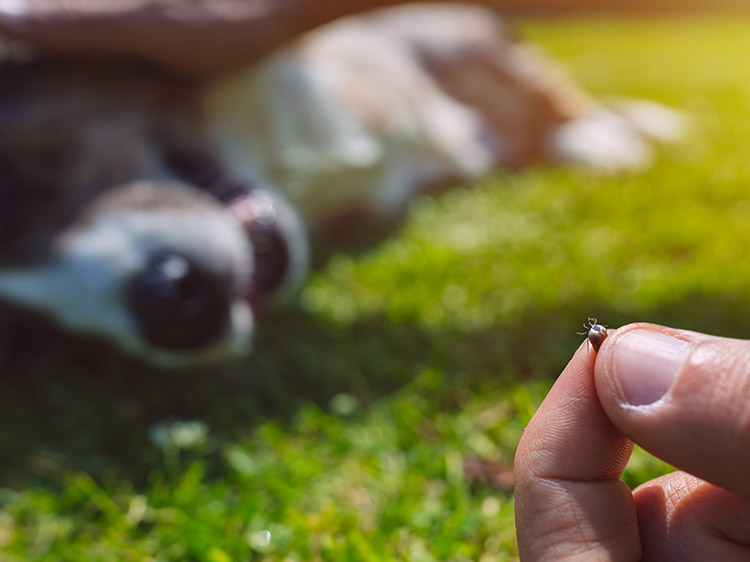As dog owners, our primary goal is to ensure our furry friends are happy, healthy, and safe. Part of that commitment involves protecting them from common parasites like fleas and ticks. In our quest to find the most effective solutions, one surprising alternative stands out— synthetic turf in Texas. Let’s explore this unexpected benefit of synthetic lawns for dogs.
The Danger of Fleas and Ticks to Dogs
Fleas and ticks are not merely nuisances; they pose significant health risks to dogs. For starters, fleas are notorious for causing intense itching and discomfort due to their bites, which can lead to allergic reactions in some dogs. Worse, consistent scratching can cause skin infections and hair loss.
Ticks, on the other hand, are known carriers of numerous diseases, the most infamous being Lyme disease. This condition causes fever, loss of appetite, lameness, and could potentially lead to severe kidney disease. Another tick-borne disease is Ehrlichiosis, which can cause anemia and damage to the spleen and lymph nodes. Both fleas and ticks can also transmit tapeworms and other parasites, adding to the health hazards these pests present.
The Draw of Natural Lawns for Fleas and Ticks
Natural grass is an inviting environment for these parasites. The reason? These critters thrive in humid, shady places, and your lush lawn provides the perfect conditions. Fleas lay their eggs in these areas, which can then hatch into larvae and start the cycle all over again.
Ticks, similarly, find solace in the tall grasses, where they patiently wait for a host to pass by—your unsuspecting dog, for instance. This process, known as questing, enables ticks to latch onto their hosts with ease. The shady, moist conditions provided by natural grass are perfect for ticks, especially as they require a certain level of humidity to survive.
The Synthetic Savior: Artificial Grass
Enter synthetic turf in Texas—a synthetic solution that fleas and ticks find decidedly inhospitable. But why?
Artificial grass does not provide the humid, shady environment these parasites love. It doesn’t grow tall, eliminating the questing spots for ticks. It also lacks the soil necessary for fleas to lay eggs and complete their life cycle. Plus, the material doesn’t retain moisture like natural grass, thus deterring these pests.
Moreover, the maintenance of artificial turf is easier. Regular cleaning with a hose can remove any pests that might have found their way onto the surface, an act that is more challenging with natural grass due to its deep roots and soil.
Other Insects That Are Dangerous to Dogs (and How Artificial Grass Deters Them)
Several other backyard pests can pose threats to our beloved canines, not just fleas and ticks. They include mosquitoes, ants, bees, wasps, and snails. Fortunately, fake grass in Texas can keep them at bay.
- Mosquitoes – Beyond being irritating, mosquitoes can transmit heartworm larvae to dogs, a serious and potentially fatal disease. Mosquitoes breed in stagnant water, and artificial grass promotes good drainage, preventing standing water that mosquitoes need for breeding.
- Ants – Some ant species can inflict painful bites, causing discomfort and potential allergic reactions. Fire ants are particularly aggressive and can cause serious harm. Ants need organic matter to survive. Because artificial grass doesn’t decompose, it doesn’t provide the food or habitat these pests need.
- Bees and Wasps – Bees and wasps can sting dogs, causing pain, swelling, and potential allergic reactions. They often build their nests in the ground or in vegetation. Artificial grass doesn’t provide the conditions necessary for them to establish nests.
- Snails – Snails can carry lungworm, which is a parasitic worm that can cause serious health problems in dogs if ingested. They enjoy damp, cool places, often under natural grass or garden debris. The environment under artificial grass is not conducive to snails’ survival.
Artificial Lawns: A Safer Play Haven for Your Pooch
In the battle against fleas and ticks, every measure counts. From topical treatments to regular vet check-ups, we must do everything we can to protect our furry friends. One unexpected yet effective strategy is the installation of artificial turf in Texas.
By replacing natural lawns with artificial turf, we reduce the chances of our dogs encountering these dangerous pests. Undeniably, artificial grass presents an unexpectedly practical, low-maintenance solution in our fight against fleas and ticks.
